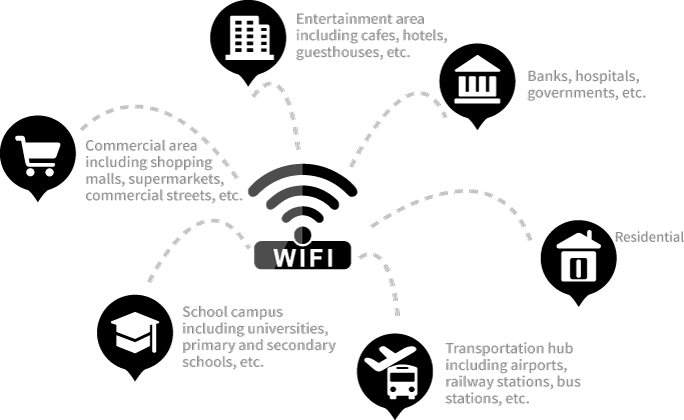WiFi
 Introduction
Introduction
The demand for mobile Internet traffic is increasing with the rapid development of mobile applications. The 4G/5G network is billed by traffic, which is expensive, so WiFi is the best choice for network users. Today, WiFi is in every aspect of life, no matter the public place, the enterprise, or the chain store.




 Applications
Applications














